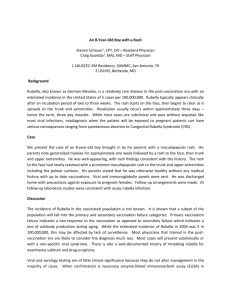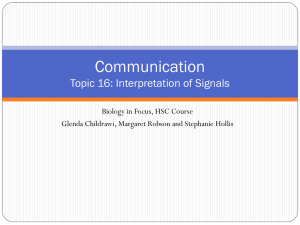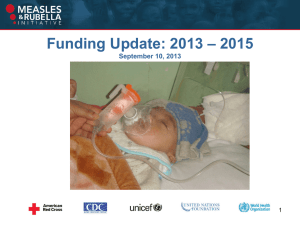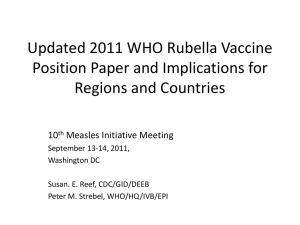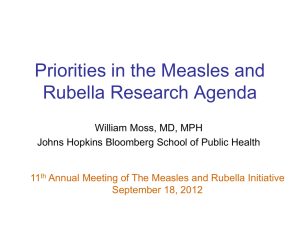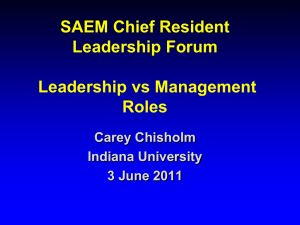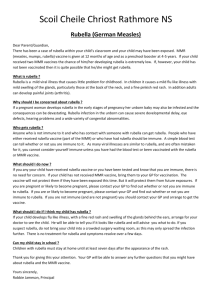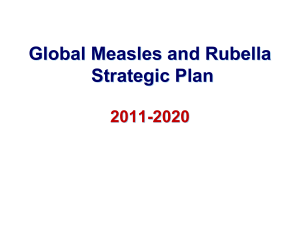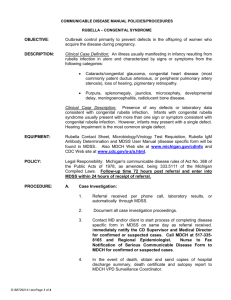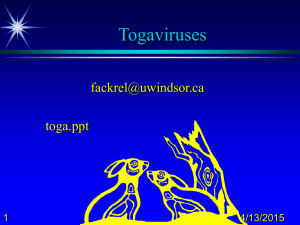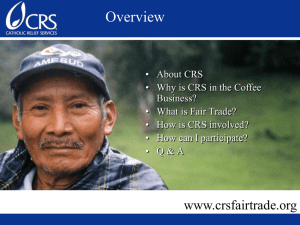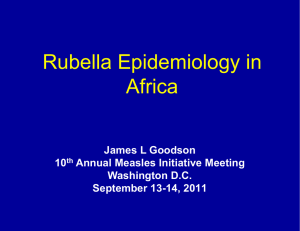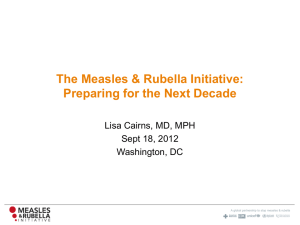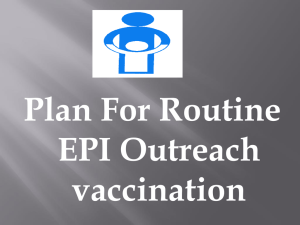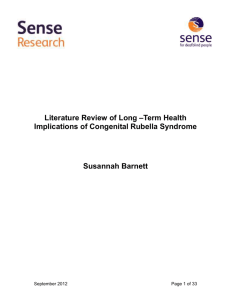Proceedings of the SAGE Working Group on Rubella
advertisement
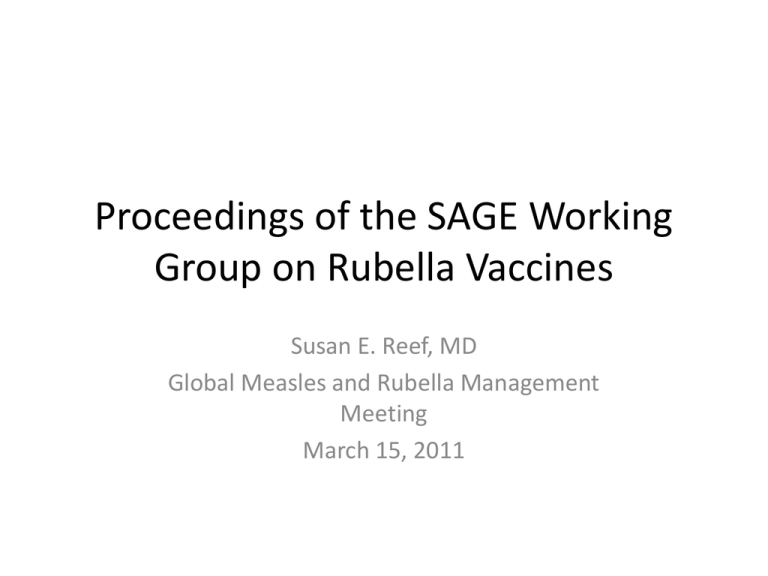
Proceedings of the SAGE Working Group on Rubella Vaccines Susan E. Reef, MD Global Measles and Rubella Management Meeting March 15, 2011 Outline • • • • Background Terms of Reference Opportunities to align with measles strategies Recommendations from the WG – Phases of rubella control and CRS prevention (Goals) – Strategies • • • • Paradoxical Effect Minimum Coverage for Rubella Vaccine introduction Recommendation from the WG on minimum threshold Summary Background • Current WHO rubella vaccine position paper was published in 2000 – Since the publication, there have been several areas that have changed • Additional countries using vaccine, • 2 regions with elimination goals and one with accelerated rubella control and CRS prevention • Additional information on vaccine safety (e.g., pregnant women) • Additional information duration of immunity • Additional formulations of vaccine Terms of Reference SAGE Working Group on Rubella • Review and propose necessary updates to the WHO rubella vaccine position paper of 2000. • Identify the information gaps, guide the work required to address the information gaps, and prepare for a SAGE review of the updated vaccination strategies. • The specific questions to be addressed: – What are the possible goals for rubella/CRS prevention and rubella/CRS elimination (country, regional or global)? – With the goals mentioned in question 1, what are the most appropriate vaccination strategies to achieve these goals? – What is the minimum required routine immunization coverage that should be achieved and maintained to ensure that the introduction of rubellacontaining vaccine does not increase the risk of CRS? Opportunities • In 2000 PP – Countries undertaking measles elimination should consider taking the opportunity to eliminate rubella as well, through use of MR or MMR vaccine in their childhood immunization programmes, and also in measles campaigns • Several potential areas of integration of measles and rubella – Combined vaccine (MR, MMR, MMRV) – Combined surveillance • Measles/rubella surveillance • Vaccine coverage monitoring • Adverse events monitoring Phases of Rubella Control and CRS TABLEPrevention of the phases No goal No rubella CRS vaccine use Prevention Only CRS Prevention Only Target adolescent girls and/or women of childbearing age for immunization either through routine services or mass campaigns CONTROL Introduce rubellacontaining vaccine into EPI schedule, follow-up campaigns plus adolescent/ adult females ACCELERATED CONTROL Mass vaccination campaigns with MR vaccine targeting children plus control strategies ELIMINATION Mass vaccination campaigns targeting all adults : men and women – plus accelerated control strategies Strategies • For each phase of rubella control and CRS prevention – Vaccination strategies – Surveillance recommendations • Integrated measles/rubella surveillance • CRS surveillance • Monitoring vaccine coverage Strategies Vaccination Strategy Goal No introduction Not applicable Surveillance Strategy Detection of rubella cases through measles case-based surveillance During outbreaks o Investigation of all rash illness (suspected rubella) in pregnant women including laboratory testing o Conduct laboratory testing of at least first 5-10 rash illnesses per month to confirm rubella as cause of outbreaks o Investigate outbreaks o Conduct active CRS surveillance Collection of specimens for molecular epidemiology (may want to include earlier) Sentinel case-based CRS surveillance in infants 0-11 months Goals CRS prevention only Rubella control and CRS Prevention Vaccination Strategy Surveillance Strategie Strategies, con’t • • • • Target adolescent girls and/or women of childbearing age for immunization either through routine services or mass campaigns Including strategy above and Introduction of RCV into the routine childhood program – preferable to be introduced combined with both MCV1 and MCV2. “Follow-up” MR or MMR campaigns targeting preschoolaged children (aged 1 to 4 years) Including strategies above and Rubella vaccination coverage monitoring Including strategies above and Detection of rubella cases through measles case-based surveillance –transition to integrated measles-rubella case-based surveillance Enhance investigation of outbreaks with laboratory testing of suspected cases Including strategies above and Enhancing integrated measlesrubella case-based surveillance – start to investigate every suspected case Including strategies above and Strengthening integrated measles-rubella or febrile rash illness surveillance – testing and investigating all suspected cases Seroprevalence studies in WCBA?, as appropriate Accelerated Rubella Control and CRS Prevention • • Including strategies above and “Catch-up” MR or MMR campaigns targeting children aged less than 15 years. • • Rubella/CRS Elimination • • Including strategies above and “Speed-up” campaigns targeting adolescents and adults, men and women. • ◦ ◦ Paradoxical Effect • Possibility that introduction of universal childhood vaccination with inadequate coverage may lead to an increase in CRS • Low coverage reduced transmission, increase in average age of infection of remaining susceptible • Children miss natural disease and vaccination and may enter reproductive age susceptible to rubella • WHO policy (2000) – > 80% MCV1 coverage to the national routine (childhood) program Minimum Coverage • WHO policy (2000) – > 80% MCV1 coverage to the national routine (childhood) program • Re-evaluate the 80% MCV1 cut-off in relationship to the accumulated experiences in countries and regions Dynamics of ρ (short term) Changes in ratio of CRS cases fo R0=10, and 40 births per 1000 per year (i.e., as in AFRO region Routine + 4 yr SIA + starting campaign 1-14 yr olds CRS incidence/100,000 livebirths Cumulative CRS incidence ratio Bangladesh (low-medium birth rate, medium transmission) 500 2.0 1.8 1.6 1.4 1.2 1.0 0.8 0.6 0.4 0.2 0.0 400 300 200 100 0 2005 2010 2015 2020 2025 2030 2035 2040 2045 2050 2005 2010 2015 2020 2025 2030 2035 2040 2045 2050 Pakistan (medium birth rate, medium transmission) 200 2.0 1.8 1.6 1.4 1.2 1.0 0.8 0.6 0.4 0.2 0.0 150 100 50 0 2005 2010 2015 2020 2025 2030 2035 2040 2045 2050 500 2005 2010 2015 2020 2025 2030 2035 2040 2045 2050 Zambia(high birth rate, low-medium transmission) 2.0 1.8 1.6 1.4 1.2 1.0 0.8 0.6 0.4 0.2 0.0 400 300 200 100 0 2005 2010 2015 2020 2025 2030 2035 2040 2045 2050 100 2005 2010 2015 2020 2025 2030 2035 2040 2045 2050 Ethiopia (high birth rate, high transmission) 80 60 40 20 500 400 300 200 100 0 0 2005 2010 2015 2020 2025 2030 2035 2040 2045 2050 2005 2010 2015 2020 2025 2030 2035 2040 2045 2050 Vaccination coverage (%) 0% 60% 70% 75% 80% 85% 2.0 1.8 1.6 1.4 1.2 1.0 0.8 0.6 0.4 0.2 0.0 2005 2010 2015 2020 2025 2030 2035 2040 2045 2050 Year Draft Recommendations for minimum coverage threshold • For countries that want to introduce – Must have a well functioning program that is committed to sustaining rubella vaccination program long term – Well functioning programs should achieve MCV1 coverage 80% using WHO/UNICEF estimates either through routine or campaign or, if program doesn’t have 80%, be committed to improve immunization program. – Point out it is OK to give at 9 months – same as the previous position paper Summary • Since the 2000 PP, several changes have occurred prompting an updating of the PP. • WG was established in 2010 • Using the experiences from the regions and countries, several different phases (Goals) and corresponding strategies were developed • With the re-evaluation of the minimum coverage threshold, countries may introduce RCV into routine childhood program if they can achieve an 80% MCV1 threshold either through routine or SIA
